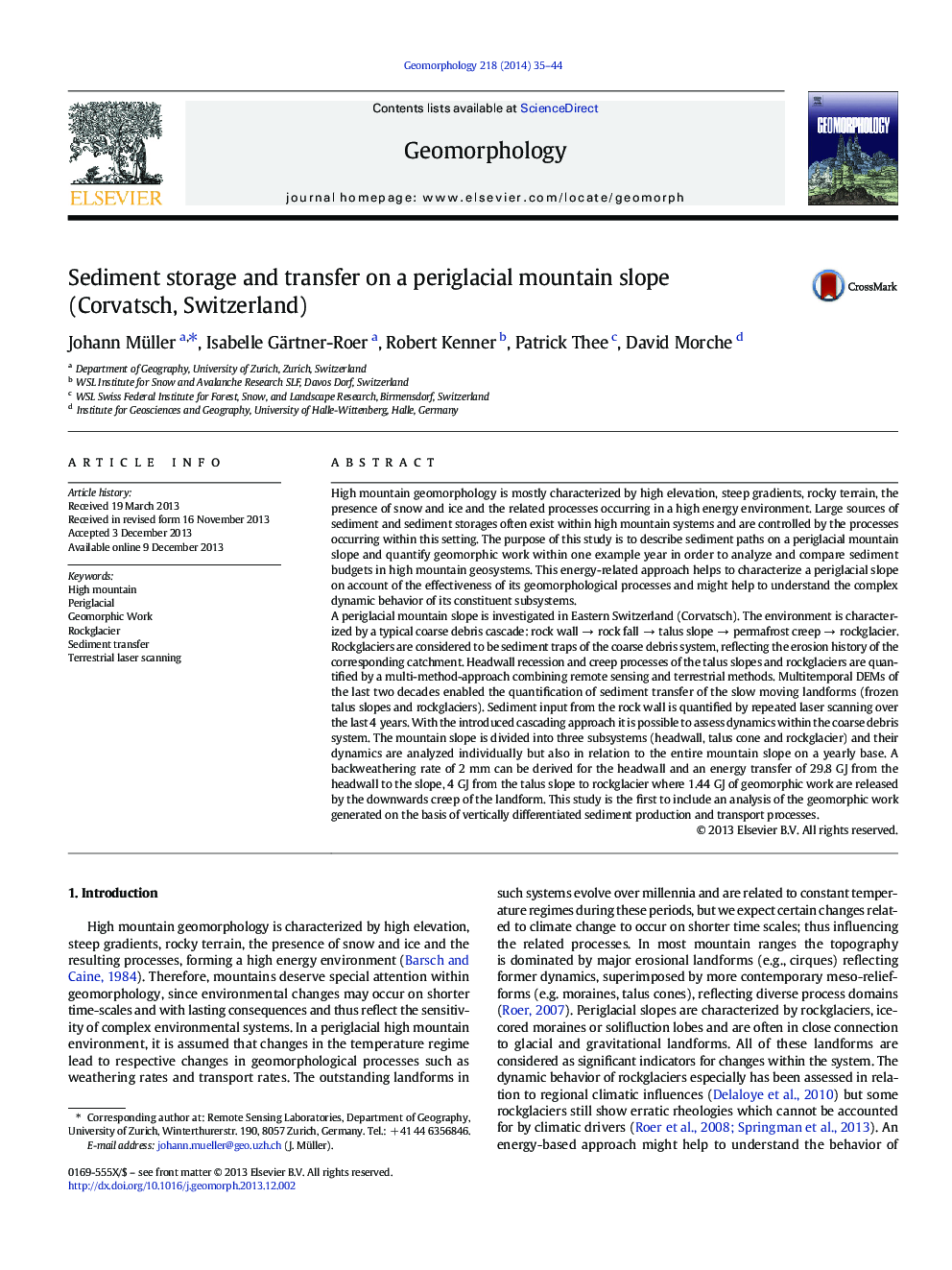| کد مقاله | کد نشریه | سال انتشار | مقاله انگلیسی | نسخه تمام متن |
|---|---|---|---|---|
| 4684489 | 1635431 | 2014 | 10 صفحه PDF | دانلود رایگان |

• The dynamic sediment of an entire periglacial mountain slope is quantified.
• The energy is derived in the form of geomorphic work.
• A multisensoral approach is necessary to assess topographically complex systems.
• A spatially discrete analysis of the sediment and energy fluxes is possible.
• The high mountain system mobilizes high amounts of energy and sediment.
High mountain geomorphology is mostly characterized by high elevation, steep gradients, rocky terrain, the presence of snow and ice and the related processes occurring in a high energy environment. Large sources of sediment and sediment storages often exist within high mountain systems and are controlled by the processes occurring within this setting. The purpose of this study is to describe sediment paths on a periglacial mountain slope and quantify geomorphic work within one example year in order to analyze and compare sediment budgets in high mountain geosystems. This energy-related approach helps to characterize a periglacial slope on account of the effectiveness of its geomorphological processes and might help to understand the complex dynamic behavior of its constituent subsystems.A periglacial mountain slope is investigated in Eastern Switzerland (Corvatsch). The environment is characterized by a typical coarse debris cascade: rock wall → rock fall → talus slope → permafrost creep → rockglacier. Rockglaciers are considered to be sediment traps of the coarse debris system, reflecting the erosion history of the corresponding catchment. Headwall recession and creep processes of the talus slopes and rockglaciers are quantified by a multi-method-approach combining remote sensing and terrestrial methods. Multitemporal DEMs of the last two decades enabled the quantification of sediment transfer of the slow moving landforms (frozen talus slopes and rockglaciers). Sediment input from the rock wall is quantified by repeated laser scanning over the last 4 years. With the introduced cascading approach it is possible to assess dynamics within the coarse debris system. The mountain slope is divided into three subsystems (headwall, talus cone and rockglacier) and their dynamics are analyzed individually but also in relation to the entire mountain slope on a yearly base. A backweathering rate of 2 mm can be derived for the headwall and an energy transfer of 29.8 GJ from the headwall to the slope, 4 GJ from the talus slope to rockglacier where 1.44 GJ of geomorphic work are released by the downwards creep of the landform. This study is the first to include an analysis of the geomorphic work generated on the basis of vertically differentiated sediment production and transport processes.
Journal: Geomorphology - Volume 218, 1 August 2014, Pages 35–44